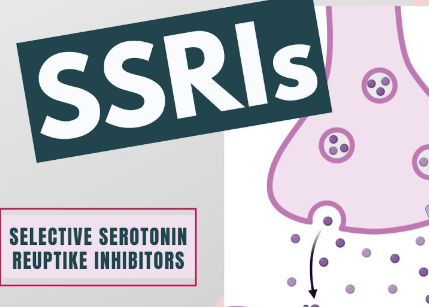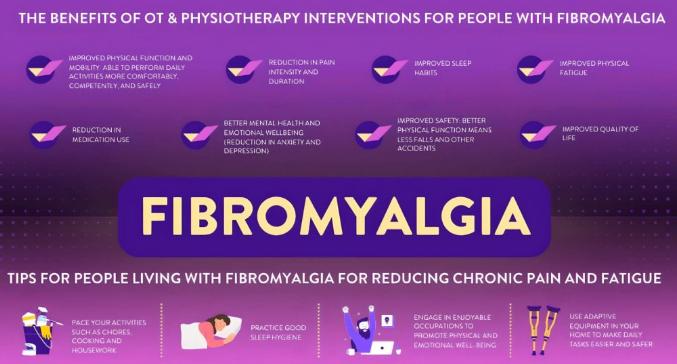Fibromyalgia is a chronic condition that affects millions worldwide, characterized by widespread pain, fatigue, and sleep disturbances. Among the range of treatments explored, antidepressants such as paroxetine have gained attention for their potential to alleviate symptoms. Originally developed as a selective serotonin reuptake inhibitor (SSRI) for depression and anxiety, paroxetine may offer benefits to fibromyalgia patients beyond its traditional use. In this article, we explore the potential role of paroxetine in managing fibromyalgia symptoms, its benefits, limitations, and how it compares to other treatment options.
What Is Paroxetine?
Paroxetine, commonly sold under brand names like Paxil and Pexeva, is an SSRI antidepressant. It works by increasing the availability of serotonin in the brain, a neurotransmitter that plays a critical role in mood regulation, pain perception, and overall well-being. While paroxetine is primarily prescribed for conditions like depression, anxiety, and panic disorders, it has also been studied for its off-label use in treating chronic pain conditions, including fibromyalgia.
Understanding the Link Between Serotonin and Fibromyalgia
Fibromyalgia is believed to be linked to imbalances in neurotransmitters such as serotonin, norepinephrine, and dopamine, which influence how the brain processes pain signals. Low levels of serotonin may contribute to the heightened pain sensitivity, mood disturbances, and sleep problems common in fibromyalgia. By boosting serotonin levels, paroxetine may help address some of these core issues, providing relief from both physical and emotional symptoms.
How Paroxetine Works for Fibromyalgia
Although paroxetine is not FDA-approved specifically for fibromyalgia, it is sometimes prescribed off-label for this purpose. Here’s how it may help:
1. Pain Reduction
Paroxetine can indirectly reduce pain by improving the brain’s ability to regulate pain signals. While it may not eliminate pain entirely, it can make symptoms more tolerable for many patients.
2. Mood Improvement
Depression and anxiety are common in fibromyalgia patients due to the chronic nature of the condition. Paroxetine’s antidepressant effects can help stabilize mood, which may, in turn, improve a patient’s ability to cope with pain and fatigue.
3. Better Sleep
Sleep disturbances are a hallmark of fibromyalgia. By addressing anxiety and regulating serotonin levels, paroxetine may promote better sleep quality, which is crucial for symptom management.
Clinical Evidence: Paroxetine and Fibromyalgia
1. Research Studies
While there is limited research specifically on paroxetine and fibromyalgia, studies on SSRIs as a class suggest they may provide moderate benefits for fibromyalgia patients:
- A 2008 study found that SSRIs, including paroxetine, may help reduce fibromyalgia symptoms like pain, fatigue, and depression.
- Another study suggested that paroxetine might improve the quality of life for patients by addressing both physical and emotional symptoms.
2. Comparative Effectiveness
Compared to other antidepressants, paroxetine may have a more pronounced effect on mood and anxiety, which are significant contributors to the overall burden of fibromyalgia. However, its impact on pain management is generally considered less robust than serotonin-norepinephrine reuptake inhibitors (SNRIs) like duloxetine or tricyclic antidepressants like amitriptyline.
Benefits of Paroxetine for Fibromyalgia
Patients with fibromyalgia may benefit from paroxetine in several ways:
- Improved Mood: Paroxetine is highly effective in managing depression and anxiety, both of which are common in fibromyalgia.
- Better Coping Ability: By reducing emotional distress, paroxetine can help patients better manage their condition overall.
- Non-Addictive Option: Unlike some pain medications, paroxetine does not carry the risk of addiction.
Limitations and Side Effects of Paroxetine
While paroxetine can be beneficial, it also has its limitations:
1. Limited Effect on Pain
While paroxetine may help with mood and sleep, its direct impact on pain relief is modest compared to other medications commonly used for fibromyalgia, such as pregabalin or duloxetine.
2. Side Effects
Common side effects of paroxetine include:
- Nausea
- Drowsiness
- Dizziness
- Weight gain
- Sexual dysfunction
- Insomnia or fatigue
In some cases, patients may experience withdrawal symptoms if they stop taking paroxetine abruptly, so it should always be tapered off under medical supervision.
3. Individual Variability
The effectiveness of paroxetine can vary widely between individuals. Some patients may experience significant relief, while others may notice little to no improvement.
Comparing Paroxetine to Other Treatments for Fibromyalgia
1. Paroxetine vs Duloxetine
Duloxetine (Cymbalta) is an SNRI that is FDA-approved for fibromyalgia treatment. While both medications target mood disturbances, duloxetine has a stronger effect on pain reduction compared to paroxetine.
2. Paroxetine vs Tricyclic Antidepressants
Tricyclic antidepressants like amitriptyline are often used for fibromyalgia due to their ability to address pain and sleep disturbances. However, they tend to have more side effects than SSRIs like paroxetine.
3. Paroxetine vs Non-Pharmacological Treatments
Non-drug therapies, including cognitive behavioral therapy (CBT), exercise, and stress management, are key components of fibromyalgia care. Paroxetine can complement these approaches by improving emotional resilience and reducing psychological distress.
Is Paroxetine Right for You?
Paroxetine may be a suitable option for fibromyalgia patients who:
- Experience significant depression or anxiety alongside fibromyalgia symptoms.
- Have not found relief with other treatments, such as duloxetine or pregabalin.
- Prefer a medication that targets emotional symptoms rather than focusing solely on pain.
However, it is essential to work closely with a healthcare provider to determine whether paroxetine is the best choice for your specific symptoms and overall treatment plan.
Tips for Taking Paroxetine for Fibromyalgia
If you decide to try paroxetine as part of your fibromyalgia treatment, keep these tips in mind:
- Start Slowly: Begin with a low dose and gradually increase it as recommended by your doctor.
- Monitor Side Effects: Report any adverse effects to your healthcare provider.
- Combine with Other Treatments: Use paroxetine alongside non-pharmacological therapies for a more holistic approach.
- Be Patient: It may take several weeks to notice improvements, so give the medication time to work.
Conclusion: Paroxetine and Fibromyalgia
Paroxetine offers a promising option for managing certain aspects of fibromyalgia, particularly mood disturbances and sleep issues. While it may not provide significant pain relief, it can improve a patient’s ability to cope with the condition and enhance their overall quality of life. As with any treatment, paroxetine should be used as part of a comprehensive care plan tailored to the individual’s needs.
If you’re considering paroxetine for fibromyalgia, consult your doctor to discuss its potential benefits and whether it’s the right fit for your treatment journey.

Click Here to Visit the Store and find Much More….
For More Information Related to Fibromyalgia Visit below sites:
References:
Fibromyalgia Contact Us Directly
Click here to Contact us Directly on Inbox
Official Fibromyalgia Blogs
Click here to Get the latest Chronic illness Updates
Fibromyalgia Stores










